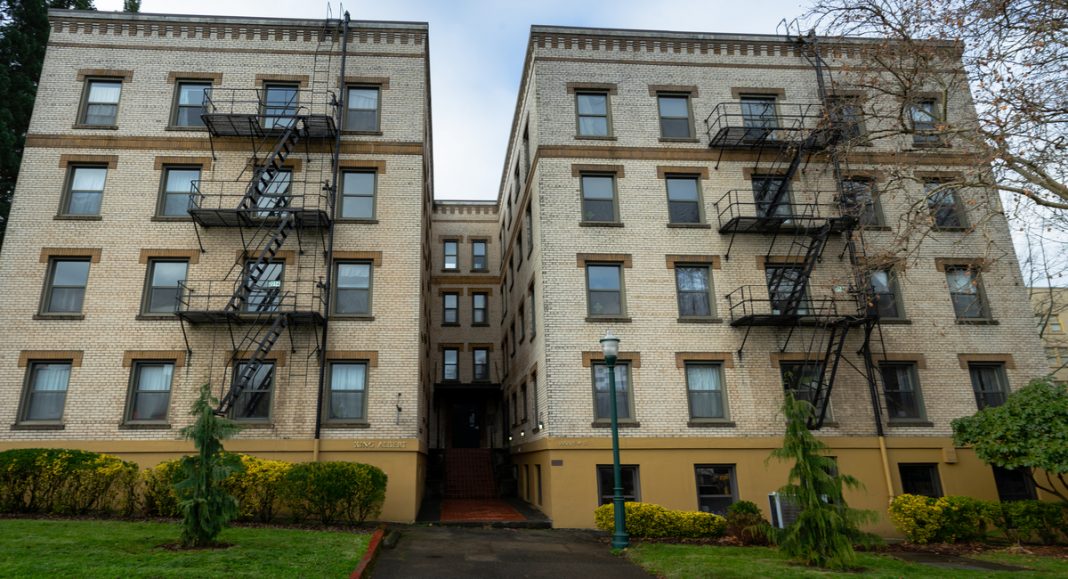2020 may as well be the year of the Cascadia Subduction Zone earthquake.
Last week, Multnomah County received recommendations from the community for the Burnside Bridge’s seismically sound replacement as part of the county’s project to prepare Portland for the likely potential of a megathrust earthquake.
“Oregon has the potential for a 9.0+ magnitude earthquake caused by the Cascadia Subduction Zone,” Oregon’s Office of Energy Management stated. “Currently, scientists are predicting that there is about a 37% chance that a megathrust earthquake…will occur in the next 50 years.”
The Cascadia Subduction Zone results from the Juan de Fuca plate, located in the Pacific Ocean, running into North America. Running from northern California up to Vancouver Island in Canada, it lies anywhere from 70–100 miles from the shoreline.
Approximately 80 miles from the coast, Portland falls right in the middle of the subduction zone. Even during a global pandemic and civil unrest, Multnomah County hasn’t forgotten about this potential natural disaster, and is moving forward with preparations to mitigate the damage.
So, how is Multnomah County planning on making the Burnside Bridge seismically sound enough to survive the megathrust? According to Diane Moug and Ashar Khosravifar, professors of geotechnical engineering at Portland State, one key aspect is liquefaction.
Liquefaction occurs when an earthquake turns soil into a soft, soupy substance. Khosravifar said an easy way to understand liquefaction is to close your eyes and imagine you’re at the coast.
“When you’re walking on the beach, the soil underneath your feet—the saturated sand—is pretty stiff soil,” Khosravifar said. “It can tolerate your weight. But then if you start stepping back and forth and jump up and down, the soil starts to get really soft and it looks like it’s bleeding out water. That’s liquefaction. That’s repetitive loading—what an earthquake does to soil. So, all of a sudden, soil that was competent enough to carry your load gets really loose.”
Liquefiable soils typically occur alongside rivers, such as the Willamette and Columbia. “Anywhere you go in the world where you have two ingredients—major rivers that deposit really loose soil or material and an active fault—when you have these two together, there’s a real liquefaction risk,” Khosravifar said.
Multnomah County officials want to ensure that one bridge spanning the Willamette within Portland won’t be susceptible to liquefaction during the Cascadia Subduction Zone megathrust earthquake.
“[Liquefaction] is really a big part of what informs the new bridge design,” Moug explained. “They wanted to move the foundation away from the weak soil that would undergo liquefaction. They’ll put the bridge piers in the middle of the river, where the soils are less likely to liquify.”
Moug and Khosravifar are currently researching ways to mitigate liquefaction along the Willamette River in northwest Portland, where the critical energy infrastructure hub is located, and around Portland airport runways near the Columbia River.
While the county continues preparing major infrastructure for the big earthquake, residents are asking themselves what they can do to help prepare themselves and their community.
Portland State Professor Yu Xiao, whose research focuses on disaster management and community resilience, says there are a few simple things we can all do now to prepare for the potential future catastrophe.
“The best way to prepare is to first take care of yourself,” Xiao said. “You don’t want to be a liability to someone else. So, first take care of your basic needs. Then help others.”
Xiao warned this is not a call to stockpile mass reserves of toilet paper, as was seen at the beginning of the COVID-19 pandemic.
“I think water is the most important thing,” Xiao said. She suggested investing in a water filtration device, which you can also use while hiking or camping. She also said residents should have two weeks’ worth of non-perishable food on hand.
Finally, Xiao emphasized the importance of having digital resources available in physical form. “Back up your documents. Make copies of your important files. Keep them together and put them in a bag. If there’s an earthquake, you want to be able to grab it and leave,” Xiao said.
Although the thought of a megathrust earthquake amid all the other challenges 2020 has brought to Portland can be frightening, Xiao remained optimistic.
“Keep a positive mind and be adaptive,” Xiao said. “Adaptation—that’s the key word. We can only adapt to the changes.”





